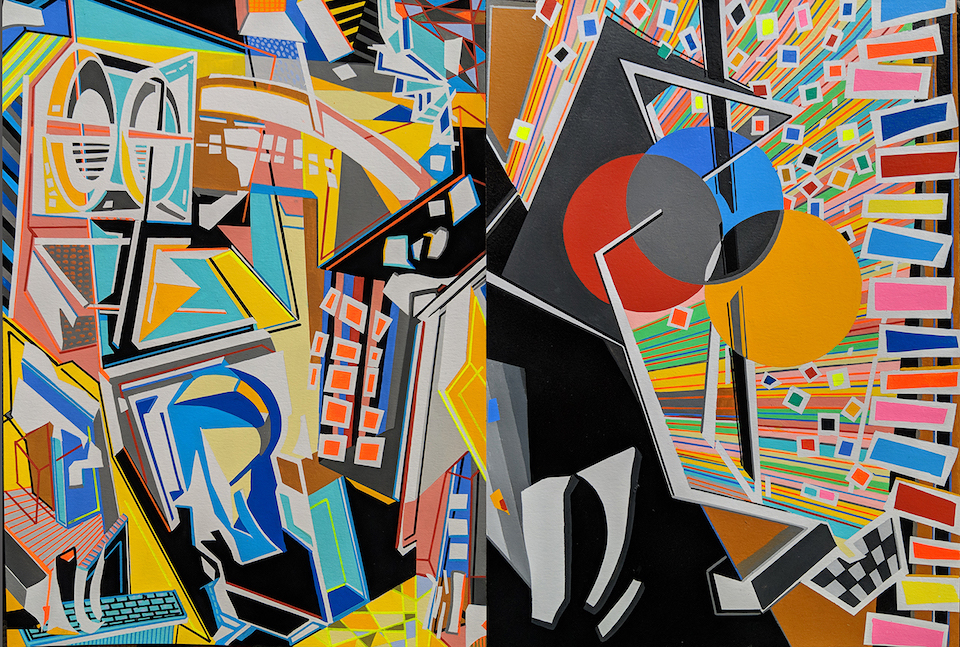Emanuela Sintamarian
"Everything is in motion, Every Object is Modified by One's Look," a colloquial paraphrasing of Heisenberg, is a new body of work in which I translate and turn the external world inside out, reducing it to colorful vortexes of familiar yet fictitious forms and structures. The main idea is based on a facet of modern physics, which states that everything that seems solid is really comprised of energy and that molecules in motion are subject to human intervention.
After several months of confinement following a ligament transplant surgery and living vicariously through my friends' stories I grew more curious about the mechanics of motion and its possible visual translation as well as how memory relates to perception. In physics, motion is described as any change in position or place. Thus, my exploration gravitated towards how much can be conveyed emotionally and conceptually within a physically static support (the paper). I realized that I am interested in pushing the limits of abstraction and suggesting emotional and physical motion in an immediate, visceral manner rather than offering a clear narrative.
This project keeps evolving and changing due to the nature of research ever so expanding as well as my working method, which is fueled by improvisation, intuition, and accidents, which are then turned into events.
As an artist, I am interested in choices: what remains to be seen, what is absent and how decisions are made. I want to reevaluate the algorithms existing in a drawing and the parameters of possibilities for changes from one drawing to the next without disruptions in the meaning or visual redundancy.
As a Romanian immigrant to the United States, I live in and between two diametrically opposed cultures, thus I often think about the relationship of my identity to displacement, and about the ways I have devised to reconcile these incongruities. My work tackles the dichotomy between containment and liberation by infusing static diagrams with charges that propel them into motion. I incorporate in my visual lexicon, elements that either borrow directly from or reference Eastern European folklore, Constructivism, architectural diagrams, and color theory charts. Collectively, these references also create complex and fractured allegorical “maps” of my physical, emotional, and intellectual journey—a means to explore loss itself as a form of identity that transforms the schema of containment into a ritualized form of self-expropriation.
Within these new works, I explore not only space and its division, but also the fluidity and tension of contradictions: organized chaos and uncontrolled order, machine-like generated image and imperfections, fictitious and concrete, recognizable/known and suggested. I also connect the dichotomies intrinsic to motion (past-present/past-future; transfer vs. change; progress vs. regress; action vs. reaction), with memory and perception: how do we remember stories/information, and how do we retell the stories or make associations between the pieces of information that we have. My aim is to map an articulated visual system of understanding the movement between memory and a posteriori experiences.
For more information about Emanuela Sintamarian, please visit her website.



